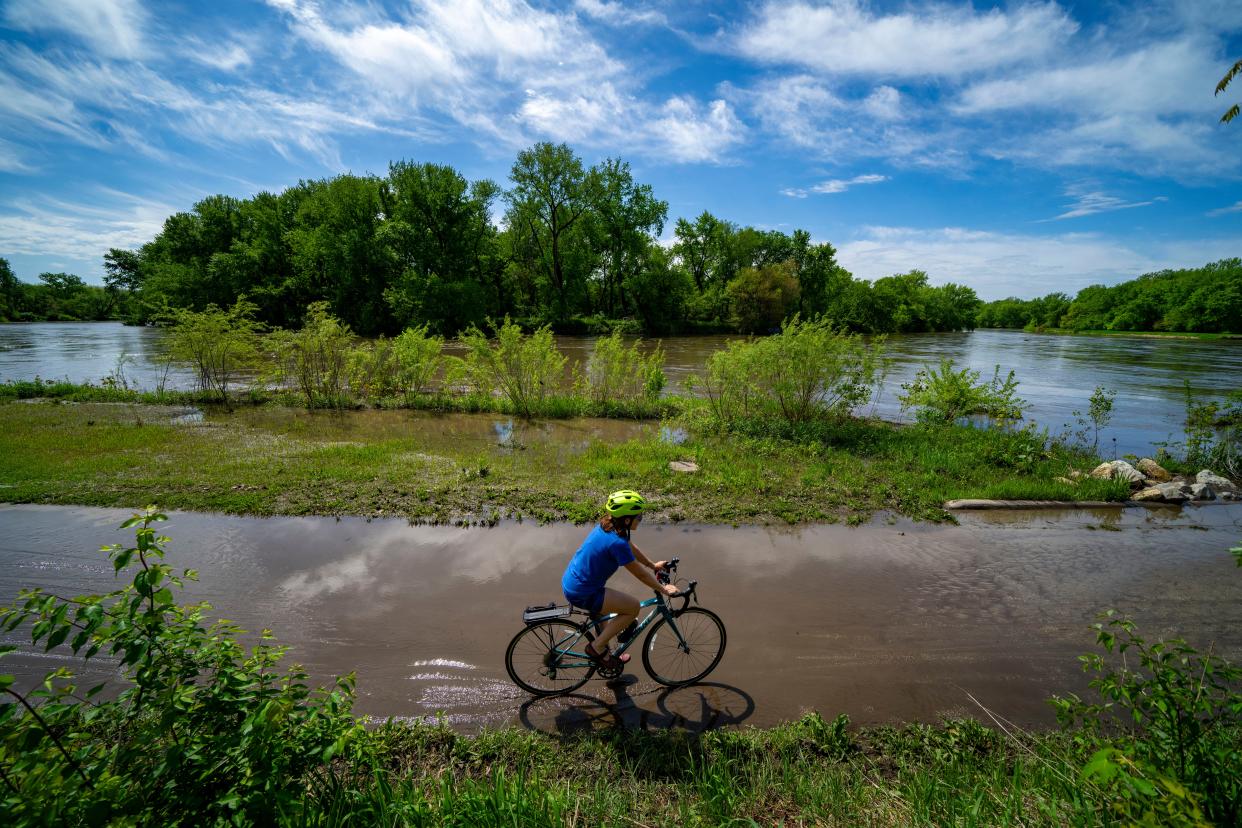Rainfall runoff after long drought leaves many Iowa rivers brimming with nitrate

Nitrate contamination of Iowa’s rivers has surged in recent weeks amid heavy, widespread rainfall, according to data collected by the Iowa Water Quality Information System.
Concentrations of nitrate in several large waterways — including the Boone, Cedar, Iowa and Turkey rivers — have recently reached four-year peaks, the data show. Further, many of the affected rivers also have much higher-than-usual stream flows, according to the U.S. Geological Survey. That often reduces the concentrations.
Because the flows and concentrations are so high, the total nitrate load is also very high.
More: Is Iowa's water cleaner after ten years of state efforts? It depends who you ask.
“This is one of the biggest nitrate leaching events in 11 years,” said David Cwiertny, director of the Center for Health Effects of Environmental Contamination at the University of Iowa.
It’s not yet clear how the level of river contamination this year will compare with others, but those who research the state’s water quality had predicted an “epic” uptick in pollution when significant rainfall returned following years of drought.
Research has shown that nitrogen fertilizer can accumulate in farm fields during dry years and leach in large amounts into streams following the droughts.
In several recent weeks — including the week before last — the state had more than double its typical rainfall. The area of the state that has some measure of drought has shrunk by more than half in the past two months, according to the U.S. Drought Monitor.
Elevated levels of nitrate and phosphorus in rivers can accelerate algae and plant growth and diminish the amount of oxygen that is available for other aquatic life. They are primary causes of the Gulf of Mexico’s dead zone around the mouth of the Mississippi River, which drains much of the Midwestern farm belt.
In Iowa’s lakes they feed algae blooms that can make the water unsafe for swimming.
And higher concentrations of nitrate in the Des Moines and Raccoon Rivers can affect the largest drinking water supply in the state. On Monday, Des Moines Water Works began operating its nitrate removal system as the concentration in the Raccoon River — one of its primary sources of water — surpassed 15 parts per million. In March it was about 1 part per million, according to water works data.
Federal rules require public water supplies to have no more than 10 parts per million in their treated drinking water. Before last week, Des Moines Water Works had only used the removal system once since the drought started about four years ago.
“Nitrate concentrations vary greatly year to year based on weather conditions and river stages,” said Melissa Walker, a water works spokesperson. “What we are seeing today is very common with what we have seen historically for the past couple of decades during similar weather patterns.”
Other rivers had higher amounts of nitrate last week, according to the Iowa Water Quality Information System. The Turkey River near Garber had 18 parts per million. The Cedar River near Janesville had 24 parts per million. And the Boone River near Webster City had 25 parts per million.
The state’s Nutrient Reduction Strategy seeks to reduce the amount of nitrate in rivers by 45% through farmers’ voluntary conservation practices. River monitoring in the past 10 years has not shown significant progress toward that goal — which has no deadline — but state agriculture officials have said they are accelerating the installation of bioreactors, buffers and wetlands to filter pollutants before they reach the rivers.
Find this storyat Iowa Capital Dispatch, which is part of States Newsroom, a network of news bureaus supported by grants and a coalition of donors as a 501c(3) public charity. Iowa Capital Dispatch maintains editorial independence. Contact Editor Kathie Obradovich for questions:kobradovich@iowacapitaldispatch.com.
This article originally appeared on Des Moines Register: Spike in Iowa rivers' nitrate levels recorded as rainfall returns

